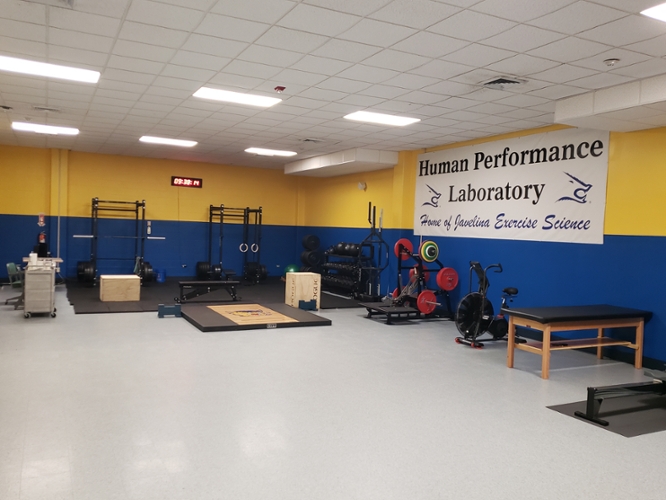Facilities
Steinke Physical Education Center (SPEC)
The Department of Health and Kinesiology's main office is located in the Steinke Physical Education Center (SPEC), built-in 1970 and renovated in 1995. In addition to faculty and staff offices, the facility houses classrooms, a 50m heated indoor swimming pool with a diving well, a bowling alley, racquetball courts, tennis courts, and a computer lab. The SPEC also houses a gymnasium which is the venue for many TAMUK and community events and is home to TAMUK's NCAA Division II basketball and volleyball teams.
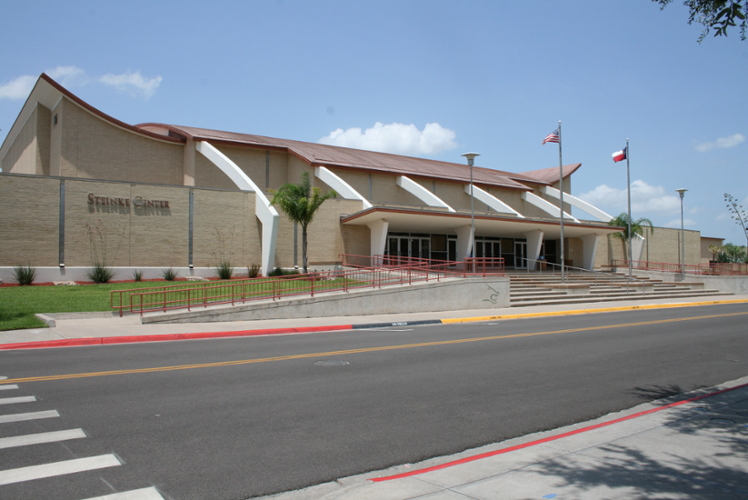
Health and Recreation Building (HREC) and Annex
The Health and Recreation Building (a.k.a., The Old Gym), erected in 1928, was one of the first three structures built on the campus of A&M-Kingsville (then South Texas Teachers College). It is now home to one classroom, faculty offices, a full-size gymnasium, and a portion of the Human Performance Laboratory (HPL). The Health & Recreation Annex houses faculty offices, a band hall, tennis courts, and a portion of the HPL.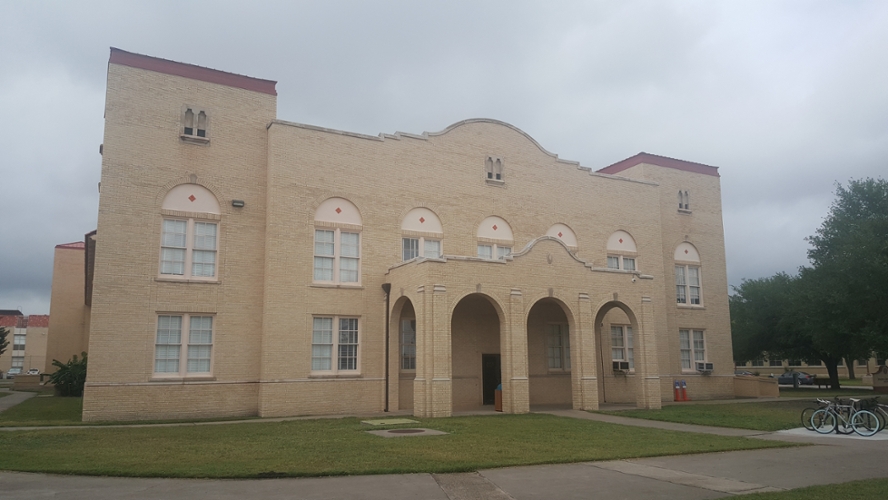
Human Performance Laboratory (HPL)
For those students interested in the exercise sciences or the testing, measurement, and evaluation of fitness and/or human performance variables, the Department of Health & Kinesiology’s Human Performance Laboratory (HPL) is located in the Health & Recreation Building. The HPL is comprised of the main lab (HREC 203) and seven sub-labs [Cardiovascular and Pulmonary Function (HREC208), Exercise Biochemistry (HREC 106a), Body Composition Assessment I (HREC 106b), Body Composition Assessment II (HREC 102), Heat Stress (103A), Motor Behavior (HREC 201-225), and HPL Annex (HREC 230)].
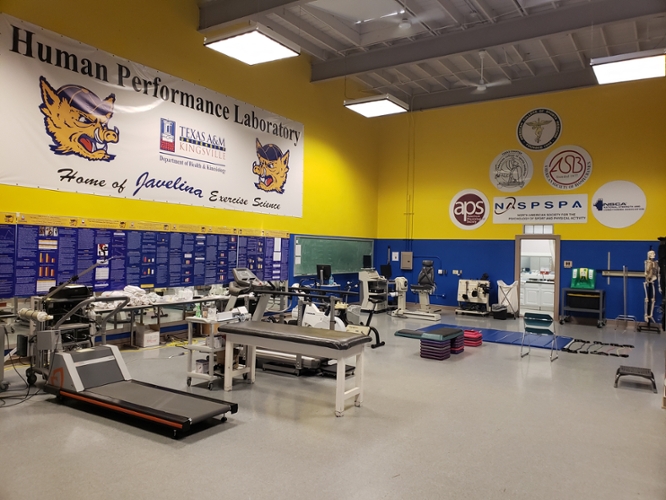
Main HPL (HREC 203, 2025 sq ft): The main HPL is a certified Biosafety Level 2 (BSL2) laboratory which serves as the parent laboratory for the department with a focus on exercise testing. Equipment housed within this laboratory includes: standard extended bed treadmill, bi-directional/incline/decline treadmill, stationary cycles (pendulum, basket drop, and rate independent), arm crank ergometer, Jackson isometric dynamometer (load cell), Lafayette manual muscle testers (hand-held dynamometers), hand grip dynamometers, Biodex single chair isokinetic dynamometer, accelerometers, pedometers, electronic vertical jump tester, sit-and-reach boxes (standard and modified), torso rotation devices, shoulder rotation devices, goniometers, flexiometers, electromyograph (Biopac), near-infrared spectroscope for muscle oxygen saturation (Moxy), metabolic cart, sphygmomanometers (aneroid and mercury column), stethoscopes (single and dual), heart rate monitors, stopwatches, metronomes, refrigerator/freezer, computer stations, athletic training tables, anatomical models, skinfold calipers (Lange), anthropometers, anthropometric measuring tape, physician's platform scales, stadiometer, field scales/stadiometer, body composition segmental ultrasound (BodyMetrix), miscellaneous blood and urine collection equipment, and field based and point of care analysis systems for a variety of blood (glucose, lipid, lactate, etc.) and urine (specific gravity, glucose, bilirubin, ect.) variables.
Cardiovascular and Pulmonary Function Sub-lab (HREC 208, 350 sq ft): This sub-laboratory provides dedicated space for specialized cardiovascular and pulmonary function testing. Equipment housed within this laboratory includes: dry (bellows) spirometer, computer interfaced spirometer (Fleisch pneumotachograph), peak expiratory flow meters, Scholander chemical gas analyzer, pulse wave velocity/analysis device (Vicorder), stationary cycles (pendulum), athletic training tables, physician's platform scales, and stadiometer.
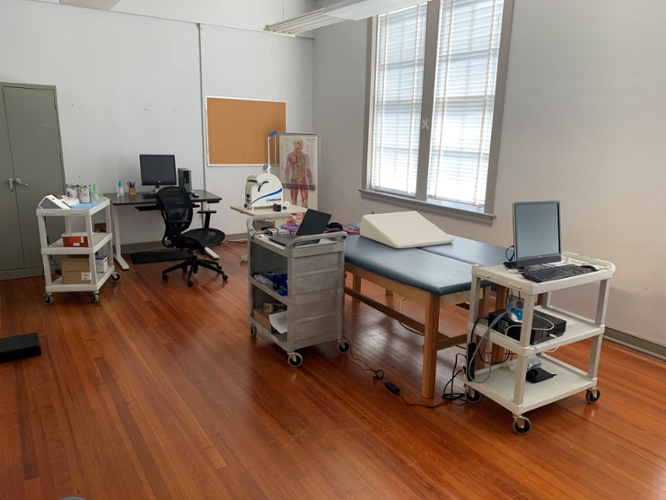
Exercise Biochemistry Sub-lab (HREC 106a, 300 sq ft): A certified BSL2 laboratory, this sub-laboratory is dedicated to the analysis of biological samples collected in the HPL’s other BSL2 laboratories. Equipment housed in this laboratory includes: ultra-low (-80) freezer, microplate reader, microplate washer, spectrophotometer, refrigerated centrifuge, hematocrit centrifuge, flake ice maker, water purification system, biosafety cabinet, refrigerator/freezer, miscellaneous blood collection/analysis equipment.
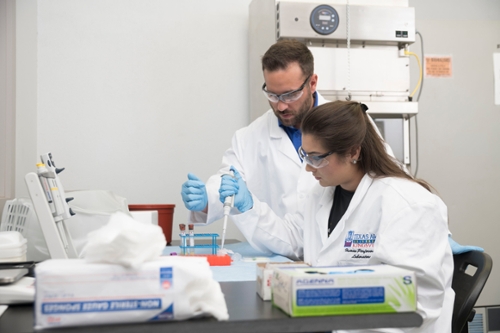
Body Composition Assessment I Sub-lab (HREC 106b, 200 sq ft): This sub-laboratory is one of two labs dedicated to body composition assessment. Equipment housed within this laboratory includes a hydrostatic chamber, physician's platform scales, and a stadiometer.
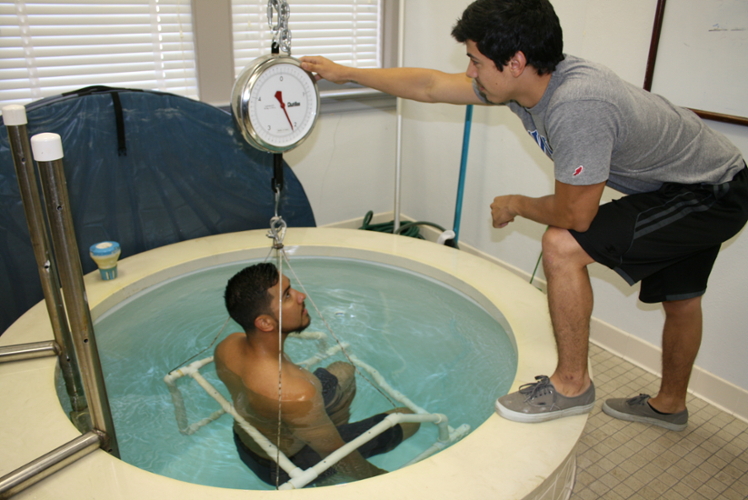
Body Composition Assessment II Sub-lab (HREC 102, 500 sq ft): This sub-laboratory is one of two labs dedicated to body composition assessment. Equipment housed within this laboratory includes skinfold calipers (Lange), anthropometers, anthropometric measuring tape, bioelectric impedance analyzer (multi-frequency), air displacement plethysmograph (Bod Pod), dual energy x-ray absortiometer (DEXA), physician's platform scales, stadiometer, and athletic training tables.
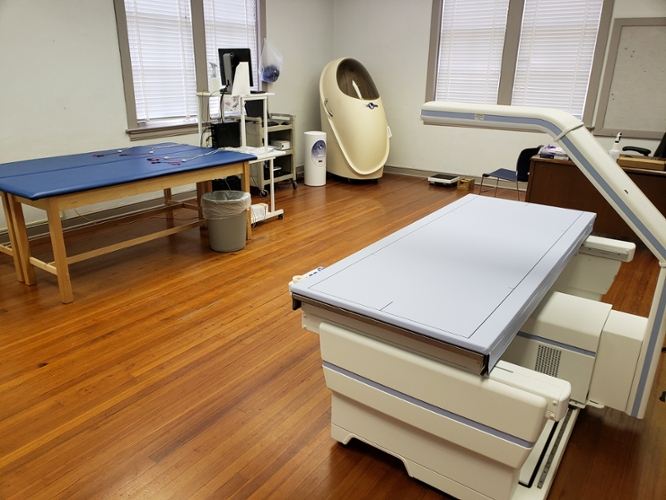
Heat Stress Sub-lab (HREC 103A, 150 sq ft): This sub-laboratory allows for controlled exposure to heat during rest or exercise. Equipment associated with this laboratory allows for the measurement of wind speed, barometric pressure, ambient air temperature, globe temperature, and wet bulb globe temperature in-house and in the field. Additionally, the sub-lab is equipped to measure core (rectal and ingestible probe) and multi-site skin temperature.
Motor Behavior Sub-lab (HREC 210-225, 1000 sq ft): This laboratory suite houses resources dedicated to teaching and investigation in the areas of motor learning/control, motor development, and sport/exercise/performance psychology. The sub-laboratory has a number of individual testing rooms that provide for testing privacy and reduced impact from outside stimuli, as well as a room dedicated to sport and performance psychology consulting with an associated observation room via a two-way mirror. Equipment housed within this laboratory includes: reaction/movement/response timers, bimanual coordination tester, grooved pegboard tester, kinesthesiometer, card sorting box, automatic tally maze, Minnesota manual dexterity test battery, cutaneous sensitivity kit, Bassin anticipation timer, steadiness tester (groove and hole), and multi-sensory fitness trainer (SMARTfit). Biofeedback, neurophysiological, and psychological testing equipment housed in the lab includes: electroencephalograph (Biopac), Inquisit software, Muse (relaxation training), Halo Sport (tDCS), vision training strobe glasses (Synaptec), speed and cognitive training system for reaction/response time enhancement (Fitlight), and multiple portable devices to assess HRV and practice arousal regulation techniques (Emwave2, Emwave plus, and BioNomadix Logger (Biopac)). This sub-lab also houses the Digital Motor Learning Center which is dedicated to analyzing and understanding cognitive psychology and perceptual motor development in relation to human neuromuscular function, and is capable of state-of-the-art virtual reality simulations through two Oculus Quest devices, two Dell Precision 3630 Computer stations, and a CSMI HUMAC Balance/Tilt board.


HPL Annex (HREC 230, 2300 sq ft): This BSL2 sub-laboratory is dedicated to teaching and research in the areas of strength, conditioning, and biomechanics. Equipment housed in this laboratory includes: power racks, power lift platform, belt squat platform (Pit Shark), peg board, an array of resistance training equipment (bar bells, dumbbells, medicine balls, kettlebells, plyometric boxes, power ropes, pull up bars, etc.), lift velocity system (Tendo), Schwinn airdyne, rowing machine, stationary cycle (rate independent, and smart high performance (Wahoo)), electromyography (Biopac), force plates (Kistler), movement analysis system (Dartfish), wearable (field-based) metabolic system (Cosmed K5), athletic training tables, physician's platform scales, stadiometer, computer stations, refrigerator/ freezer, ultra-low (-80) transport freezer, miscellaneous blood and urine collection equipment.
